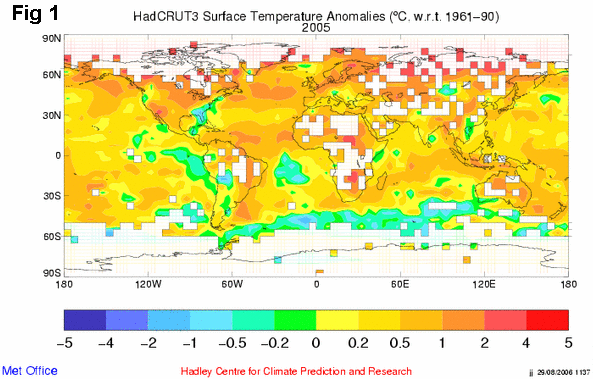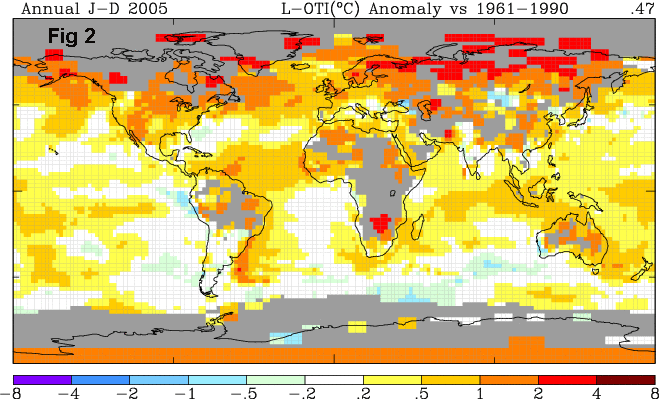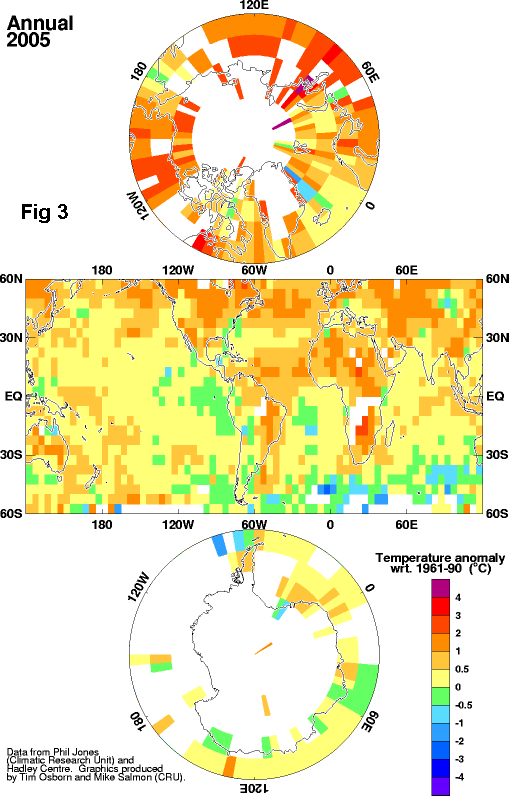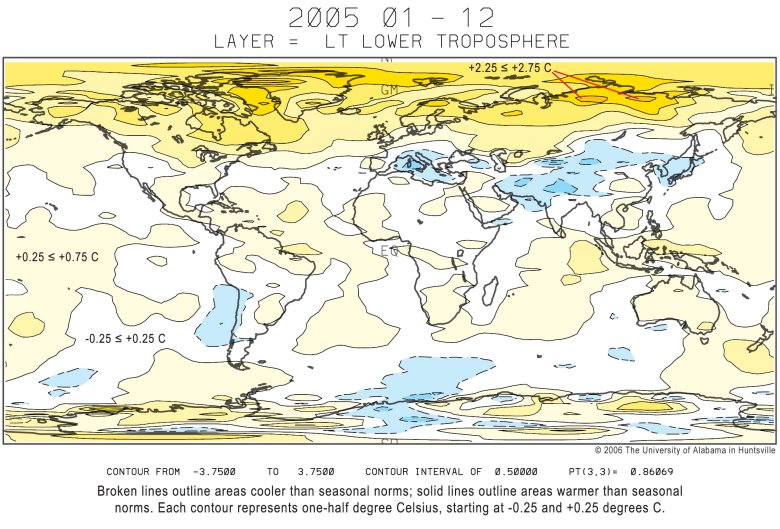
It is interesting to compare particularly southern ocean region anomaly in the 0.2 to -0.2 band in Fig 1 and Fig2. It is perfectly obvious in the GISS Fig 2 that there are larger ocean areas in the 0.2 to -0.2 band.

Note that GISS oceanic areas use a splice of Hadley V2 SST's up to 1982 and the Reynolds SST's (which are only available after 1982.). Reynolds SST's incorporate satellite data.

To a lesser extent this is also true for Fig 2.
Fig 3 has a different scale for colour coding anomalies so distribution of say the 0.5 to -0.5 zones in oceanic areas is not so easy to eyeball compare with Fig 1.
However it does look to me as though Fig 2 and 3 oceanic anomalies are more similar while Fig 1 tends to warmer SH oceans.
Take for example the lt brown 0.5 to 1 degree zone in Fig 1 stretching solid from Durban to Indonesia.
Note how in Fig 2 this zone is broken and in Fig 3 more dispersed again.
Ditto for an area east of New Zealand, where Fig 1 has a warmer anomaly and Fig 3 the coolest.
Clearly we need to develop our data analysis software to compare these global gridded datasets.
This is on the agenda.

There are many other differences to ponder.
Such as, none of the 3 surface versions high latitude Arctic contouring anywhere near resembles the satellites finding of small peak warm areas in North Siberia.
What support is there for the southern African surface anomalies, Hadley and CRU warmth east of Lake Chad, the two Canadian "red patches" of GISS and the GISS red anomalies east of the Caspian Sea and over western Pakistan.
It is likely that much peak warmth in surface datsets is utterly spurious and a product of bad data.